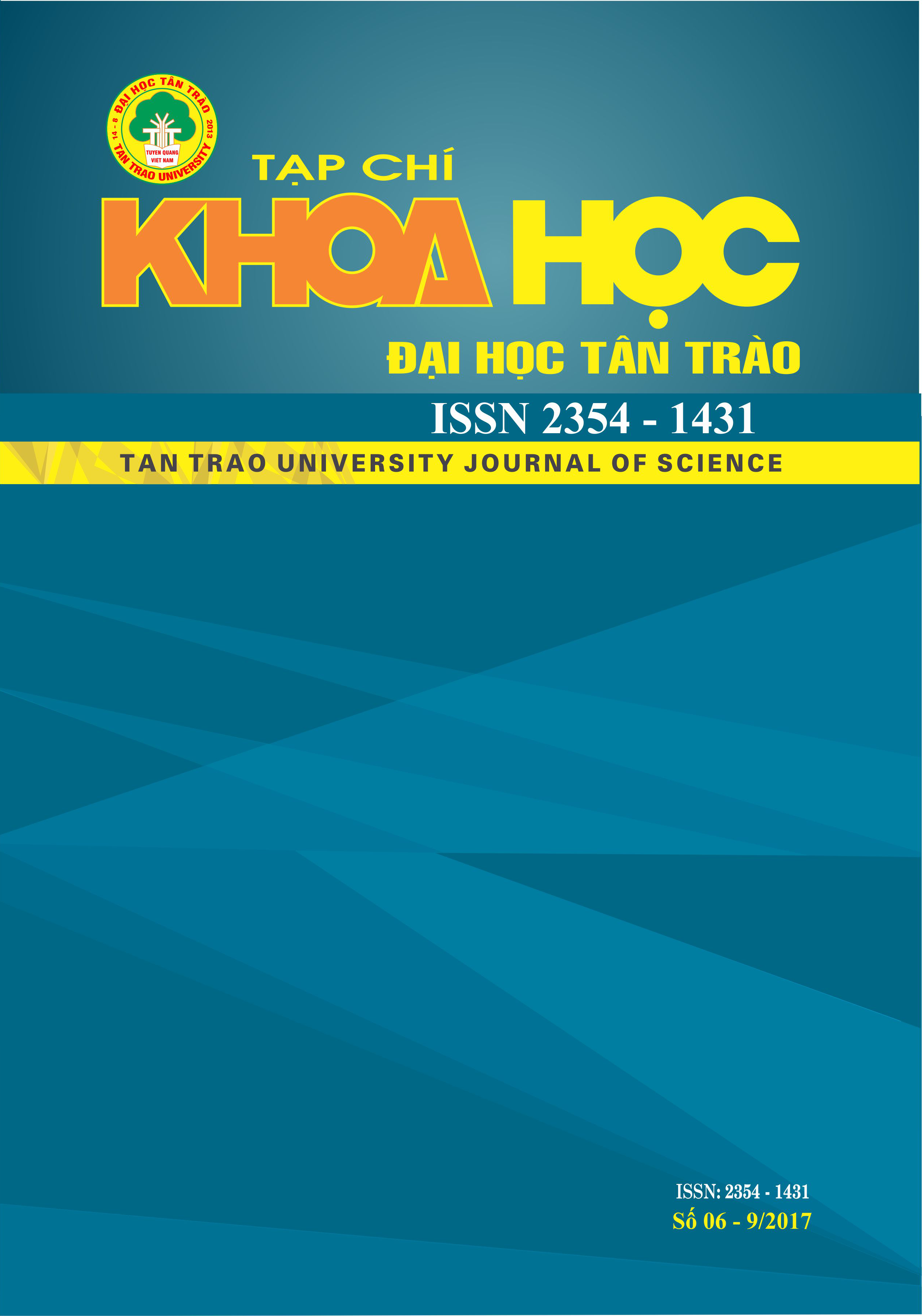Định kiến xã hội - một vỉa hiện thực mới trong tiểu thuyết và truyện ngắn của Nam Cao trước Cách mạng
DOI:
https://doi.org/10.51453/2354-1431/2017/177Từ khóa:
Social prejudice;Origin; State;Scorn;Pettiness; Selfish;Ignorant; Progressive; People’s intellectual.Tóm tắt
The research article focuses on the question of social prejudice in the novels and short stories of Nam Cao before the Revolution. This survey clarifies the position of writer Nam Cao in the trend of literary realism in particular and contributes about the artistic ideas of Nam Cao to modern Vietnamese literature. The author uses the method of documentary research, methods of systematization, generalizations besides some research skills such as analysis, demonstration, comparison... Since then, the research article has clarified the manifestation of the problem of social prejudice through the world of iconography, the environment, the cause of social prejudice, the way of explaining social prejudice and some solutions of the writer.
Tải xuống
Tài liệu tham khảo
1. Huệ Chi - Phong Lê, Con người và cuộc sống trong tác phẩm Nam Cao, Tạp chí Nghiên cứu văn học, số 1 - 1961;
2. Hà Minh Đức (1961), Nam Cao, nhà văn hiện thực xuất sắc, Nxb Văn hoá, Hà Nội;
3. Phong Lê, “Sống mòn” và tâm sự của Nam Cao, Tạp chí Văn học, số 9 - 1968;
4. Nguyễn Đăng Mạnh (1996), Con đường đi vào thế giới nghệ thuật của nhà văn, Nxb Giáo dục, 1996;
5. Trần Đăng Xuyền, Quan điểm nghệ thuật của Nam Cao, Tạp chí Văn nghệ quân đội, số 121 - 1991;
6. Nhiều tác giả (1998), Nam Cao - về tác giả và tác phẩm, Bích Thu tuyển chọn và giới thiệu, Nxb Giáo dục.
Tải xuống
Đã Xuất bản
Cách trích dẫn
Số
Chuyên mục
Giấy phép

Tác phẩm này được cấp phép theo Giấy phép Quốc tế Creative Commons Attribution-ShareAlike 4.0 .
Bài báo được xuất bản ở Tạp chí Khoa học Đại học Tân Trào được cấp phép theo giấy phép Ghi công - Chia sẻ tương tự 4.0 Quốc tế (CC BY-SA). Theo đó, các tác giả khác có thể sao chép, chuyển đổi hay phân phối lại các bài báo này với mục đích hợp pháp trên mọi phương tiện, với điều kiện họ trích dẫn tác giả, Tạp chí Khoa học Đại học Tân Trào và đường link đến bản quyền; nêu rõ các thay đổi đã thực hiện và các nghiên cứu đăng lại được tiến hành theo cùng một bản quyền.
Bản quyền bài báo thuộc về các tác giả, không hạn chế số lượng. Tạp chí Khoa học Tân Trào được cấp giấy phép không độc quyền để xuất bản bài báo với tư cách nhà xuất bản nguồn, kèm theo quyền thương mại để in các bài báo cung cấp cho các thư viện và cá nhân.
Mặc dù các điều khoản của giấy phép CC BY-SA không dành cho các tác giả (với tư cách là người giữ bản quyền của bài báo, họ không bị hạn chế về quyền hạn), khi gửi bài tới Tạp chí Khoa học Đại học Tân Trào, tác giả cần đáp ứng quyền của độc giả, và cần cấp quyền cho bên thứ 3 sử dụng bài báo của họ trong phạm vi của giấy phép.






